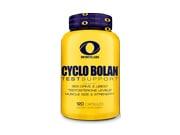

Infinite One Series Review: D-Aspartic Acid
Table of Contents
Infinite One Series Review: D-Aspartic Acid
It is well known that supraphysiological elevations of testosterone via administration of anabolic steroids have been shown to increase strength and muscle hypertrophy drastically. One of the most prominent studies published in the Journal of Applied Physiology reported that there was a dose-dependent effect on testosterone and muscle growth. Meaning that the more testosterone you have in your system, the greater the increases in muscle mass. Currently, it is unknown whether boosting testosterone levels within “normal physiological levels” (mid-range to upper-range) will have a significant effect on strength and hypertrophy. A recent review of the literature has reported that in older men, hormone replacement therapy even with small doses resulted in increases in muscle mass and reductions in bodyfat. It is suspected that even small elevations in testosterone can increase protein synthesis and muscle mass.
After 8 Weeks of Training: Post-Exercise Testosterone Levels Stimulate Muscle Gains
In the last month, there has been a research breakthrough regarding testosterone and resistance exercise. Researchers examined in the Journal of Strength and Conditioning Research, the impact of post-exercise hormones on muscle growth. The researchers took blood samples pre-exercise and measured muscle size (thickness and cross-sectional area) of the legs. The study examined the impact of various anabolic hormones in 26 resistance-trained men. Participants were randomly selected to complete a high-volume exercise program consisting of:
– 10–12 repetitions, 1-min rest periods) or
-High-Intensity (3–5RM, 3-min rest periods) resistance training program.
During training, participants were required to complete at least 28 resistance training sessions (~90%) of an 8-wk resistance-training program (4 sessions · week) that included six upper- and lower-body exercises during each session. Blood samples were collected at baseline, immediately post-exercise, 30-min and 60-min post-exercise during weeks 1 and eight weeks of training.
At the end, if the study, of all the hormones, measured, only testosterone is related to muscle hypertrophy across eight weeks of training. There were no significant pathways observed in the other hormones studies such as cortisol, GH, IGF-1, or insulin. The findings indicate that baseline muscle size and the hormonal response to resistance exercise are related to muscle hypertrophy following eight weeks of training. Further, the observed relationships appear to remain consistent regardless of whether resistance training emphasizes training volume or intensity. So it’s safe to say that the elevations in testosterone that occur with resistance exercise are necessary for muscle growth later on. No Strength Gains Without Testosterone Elevations
No Strength Gains Without Testosterone Elevations
In men, muscle mass and strength are often described as being associated with increased testosterone levels. Testosterone plays a significant role in the muscle hypertrophy and strength gained resulting from resistance exercise. If you don’t think testosterone is essential for muscle growth, take a look at this study. One study documented that without testosterone, you can expect impaired strength gains from a heavy resistance training protocol. In the study, young men performed several weeks of performing a resistance training program while receiving a medication that turn blunts the production of testosterone. The strength-training period of eight weeks included exercises for all major muscles (three to four sets per exercise x six to 10 repetitions) and one-minute rest periods between sets. The protocol was designed to cause acute increases in testosterone, which has been validated by previous investigations. The subjects who received the testosterone suppression medication had a decrease in testosterone that was 10 percent lower than that of healthy males, whereas testosterone remained constant in the placebo group. So here is where the importance of testosterone becomes apparent for muscle strength and weight loss. The group that received the testosterone-suppressing medication showed no changes in strength after training, whereas the placebo group had increased strength gains. Body fat mass increased in the testosterone suppression group while it decreased by 1.3 pounds in the normal group. The testosterone blunting medication group made a small gain in lean mass, but not as much as the placebo group. So this study demonstrates that maintaining or increasing testosterone levels are essential for strength gains.

Infinite One Series: D-Aspartic Acid
D-Aspartic Acid and Testosterone
D-Aspartic acid (DAA) is a D-amino acid that has received significant attention because of its presence in animal nervous and reproductive systems. D-Aspartic Acid is found naturally in the testes, pituitary gland, and hypothalamus, all of which are involved in hormone production. Rat studies have demonstrated that DAA increased levels of testosterone, luteinizing hormone, progesterone, and growth hormone.
D-Aspartic acid can be used as a testosterone booster for infertile men, and by athletes as a temporary booster. D-Aspartic Acid is believed to stimulate the production and release of testosterone through multiple pathways. Here are a few studies demonstrating the testosterone supporting effects of DAA:
• It has been shown to increase testosterone indirectly in rats by increasing steroidogenic acute regulatory protein (StAR) gene expression in testosterone producing Leydig cells. By increasing levels of StAR, D-Aspartic Acid may indirectly increase testosterone, as the transportation of cholesterol is believed to be the rate-limiting step in the production of testosterone.
• Test Tube studies performed on rats demonstrated that D-Aspartic Acid increased levels of testosterone.
• One study with a small number of subjects demonstrated that after 12 days of D-Aspartic Acid supplementation, increased levels of testosterone by 42%.
Human studies on D-Aspartic Acid supplementation are sparse. One study with a small number of subjects demonstrated that after 12 days of DAA supplementation, increased levels of testosterone by 42%. This study has been replicated by another study where 2.66g of DAA was able to increase serum testosterone in infertile men by a variable 30-60% after 90 days.
The general recommended dose of D-Aspartic acid is 3g per day. Consuming more will not enhance gains, in fact some studies suggest that consuming more than 3 grams may have a negative impact on testosterone levels.

















